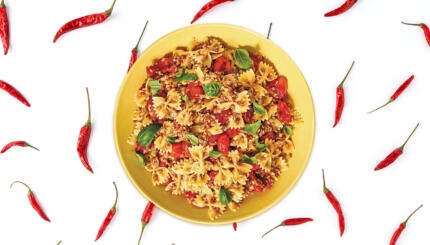Like Whitney Houston’s 1995 movie hit about four friends living through different phases of love and life, many in post-Yom Kippur life are experiencing some version of Waiting to Exhale.
Some exhale with relief that the High Holy Days are over. (Clergy, I’m looking at you.) Others exhale with regret that their heady High Holy Day high is history. Some hold their breath in joyful anticipation of Sukkot. Others have different feelings about Sukkot, ranging from breathy exhaustion to a nonplussed “who cares?” For some most socially and spiritually immersed in the Jewish calendar, this annual cycle of renewal will continue through Hoshana Rabbah, Shemini Atzeret, and Simchat Torah, and only the start of the next month (Cheshvan) – so totally devoid of holidays that our rabbinic ancestors imagined the month of Cheshvan to be bitter (mar) – will signal the great exhale after the holidays.
Whichever way you roll, whatever your responses to this peak season, your responses likely will continue for a while. Emotional time tends to fit the calendar inexactly, both jumping ahead with anticipation and lagging behind whether with afterglow or hangover. Either way, even the proverbial exhale isn’t the end: the holidays linger after and as long as we live, even our exhale after the holidays merely precedes the next inhale. The next inhale, in turn, will be another new beginning, another chance, and then another. As Semisonic’s Closing Time put it, “Every new beginning comes from some other beginning’s end.”
As the new beginnings that were Rosh Hashanah and Yom Kippur become less “new” with each passing hour, now another new beginning begins. This newest new beginning is the rest of the year, starting right now.
The “now” of this newest new beginning asks us new questions especially appropriate for this radical “now” that begins now. If we made High Holy Day promises, will we keep them? How? If we sought forgiveness and received it, what will we make of that new opportunity? If we didn’t seek forgiveness or sought forgiveness and didn’t receive it – or if someone asked us for forgiveness and we withheld it, or if someone did us wrong but never sought forgiveness – how will we live with those realities? If we felt a heady high during these peak days of meaning, how will we plug back into that high during the seemingly “ordinary” days that follow, one “now” after the next? If we didn’t like how we felt (or if we felt nothing) during the peak days of meaning, how will we make the year ahead meaningful in ways that make “now” truly “now” and not merely a reaction to “then”?
We’re all in different phases of love and life – and if we’re deeply honest, we acknowledge that each of us will react to these questions differently. Some will run from the questions entirely. Some will find these questions impertinent. Some will ask them but despair of having easy answers. (Are there any?) Some will ask the questions and live into answering them day by day, relationship by relationship, breath by breath. And suddenly, that very variability, the possible paths that lie ahead for us, look little different from the poignant language about life and meaning that the High Holy Day liturgies invoked just days ago.
Those questions don’t go away simply because we close the book on these peak days of meaning. Rather, these questions are the questions – timeless, poignant, challenging and existentially real – about how we will love and how we will live. They don’t go away, whatever our reaction or non-reaction to them might be.
So while Rosh Hashanah and Yom Kippur are important, what’s perhaps even important comes next – these days after the holidays in which we exhale and breathe into the next new beginning. And the next one. And the next one. If in the breaths after Rosh Hashanah and Yom Kippur we begin to live differently, then those High Holy Days will matter to our lived experience and the lives of our families, communities, people, and planet. If not, the questions still will follow us for as long as we have breath.
The magic of a niggun (wordless melody) isn’t that we sing it or even how we sing it, but when we so immerse ourselves in the singing that it begins to sing us. So too for the High Holy Days, and so too for their questions that linger after we exhale. As much as we can live into those questions, we can let those questions live us and thereby continue renewing us, prodding us, shaping us, helping us grow in love and life – so that the days of meaning can continue all year long.
One breath at a time. And now. And now.
*Photo credit: http://www.wookmark.com/image/239465/travel-photography-by-thomas-leuthard-black-and-white-photography



